Divinity 2 Original Sin New Edition When Respec
Divinity: Original Sin 2is the highly anticipated sequel to an unanticipated hit.
Divinity: Original Sin took me by surprise in 2014. For the most part, the revival isometric RPG revival focused on reviving the classics of old—Pillars of Eternity in particular, with its Infinity Engine stylings, but Wasteland 2, Tyranny, and Torment: Tides of Numenera didn't stray too far from the template.
But then there was Divinity, which I once wrote felt like what you'd get "if, instead of dying in the early 2000s, the isometric CRPG genre had kept evolving that whole time." Built from layer upon layer of systems, Original Sin added dynamism to the stodgy Infinity Engine formula. Flexible skills and classes allowed for manifold character builds, quests presented half a dozen or more approaches, and a deep combat system reacted to both you and the environment—it often felt like the only limit was your creativity.
That still holds true. Today Divinity: Original Sin II officially emerges from Early Access, and I'm happy to say it's every bit the sequel you'd expect. Well, at least the first 10 or 11 hours.
The journey of a thousand miles…
Yeah, I'm not done yet. Not even close. We received the final review build of Original Sin II on Tuesday night, and I don't know how long it's going to be but the first game lasted me 55 hours so…close to that, probably? Maybe more?
It might take a bit.
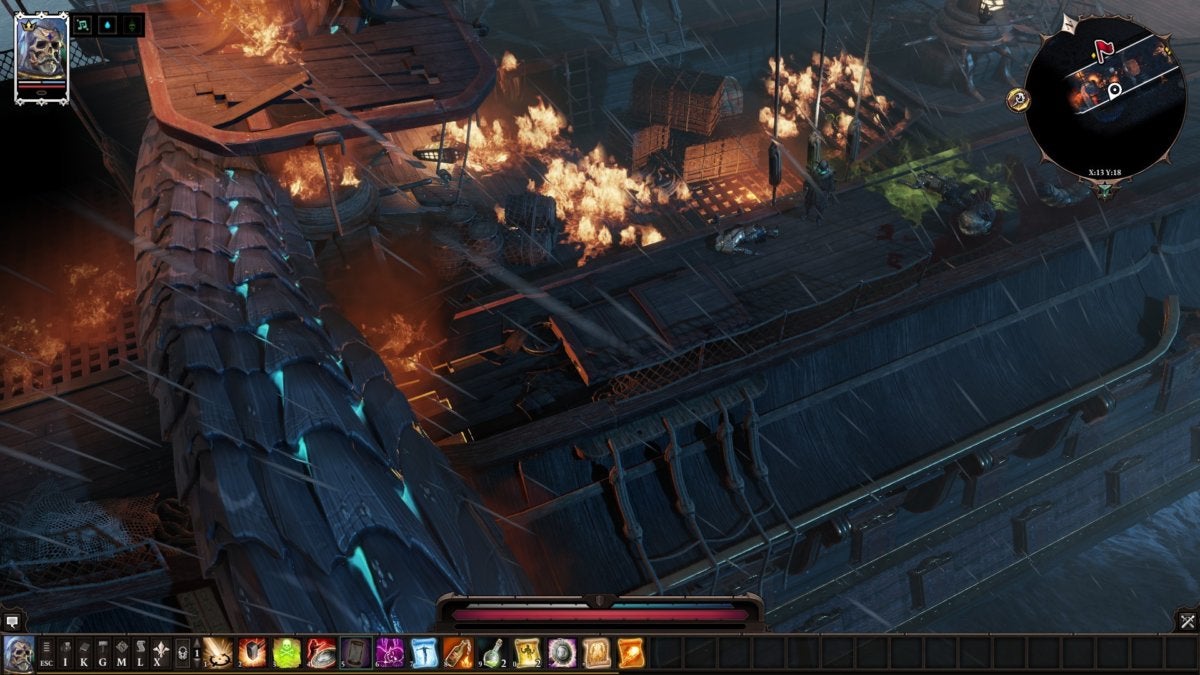 IDG / Hayden Dingman
IDG / Hayden Dingman I've played the first 10 or so hours though, as I said. That covers the Early Access content essentially—a short tutorial/prologue on a prison-bound ship and then the first main area, the prison island of Fort Joy.
Not included in the Early Access build (as far as I'm aware) is my character, Fane. Like most RPGs, the previous game had you create your characters from scratch when entering the game. That's still an option, but you can also play as one of five "Origin" characters, each with a custom-crafted backstory and a unique perspective on the world. The four you don't choose are available as companions later.
Fane's an undead humanoid who fell asleep sometime in the distant past and awoke in the present day to find he's the last of his race. From what I've heard, Fane is a product of writer Chris Avellone—and it shows. There's a real Planescape: Torment vibe to Fane's story so far.
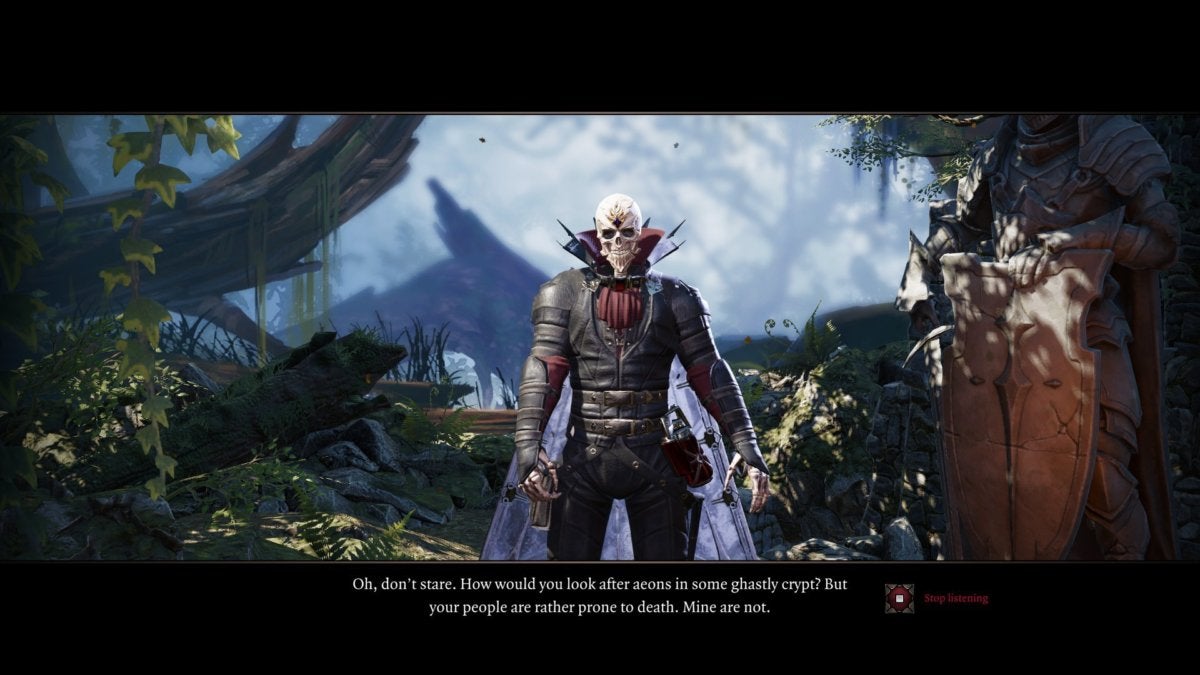 IDG / Hayden Dingman
IDG / Hayden Dingman Fully voiced introductions to each character's story, too.
Which brings me to my first point: The writing. Original Sin II's biggest improvement over its predecessor is the writing, by far. It's not that Original Sin was bad per se, but the story was pretty simplistic and often played second fiddle to the combat systems.
That isn't the case this time around. While combat is still prevalent in Original Sin II, the bits of story I've seen so far are already more interesting, the stakes more immediate, the characters more fleshed out than anything in the first game's opening hours.
The tag system which I demoed in my first-ever hands-on with Original Sin II is proving pretty amazing so far. Basically, the game assigns your character(s) various tags based on race, class, background, and certain actions. Fane for instance sports Undead, Scholar, and Mystic tags, plus those specific to his character. I also unlocked the "Hero" tag at one point for helping out around Fort Joy.
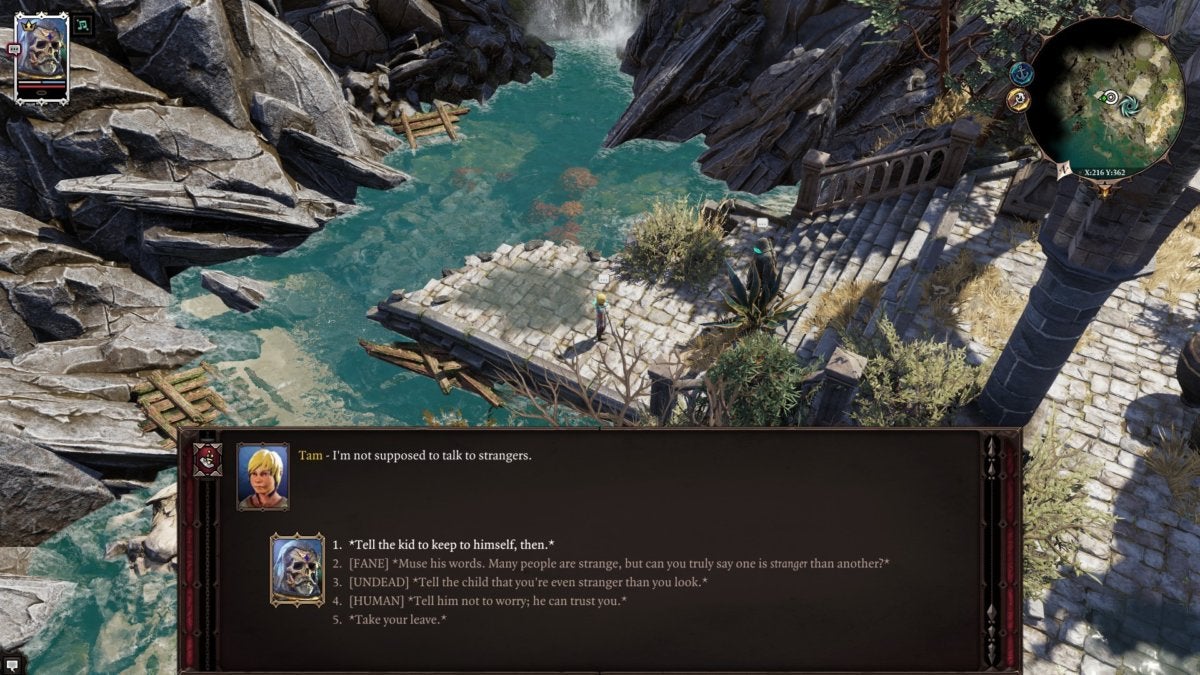 IDG / Hayden Dingman
IDG / Hayden Dingman These tags then feed into dialogues. A conversation about death might sport three generic responses for instance plus a Fane-specific option about it "Not being that bad."
It's not a revolutionary system—variations of this have existed in RPGs over the years. What impresses me about Original Sin II is how prevalent these unique dialogue options are. Almost every conversation I've taken part in has had at least one, often more, lines specific to my character, be it race, class, or other attributes.
Sometimes you can get a different perspective by switching to one of your companions and seeing how conversations change, but during important story moments you're stuck with your main character's perspective. I can't even imagine how many alternate quest pathways, how many bits of story, or how many throwaway lines I've missed by playing as Fane and not the Red Prince, Lohse, or the other companions, but it must be a stunning amount.
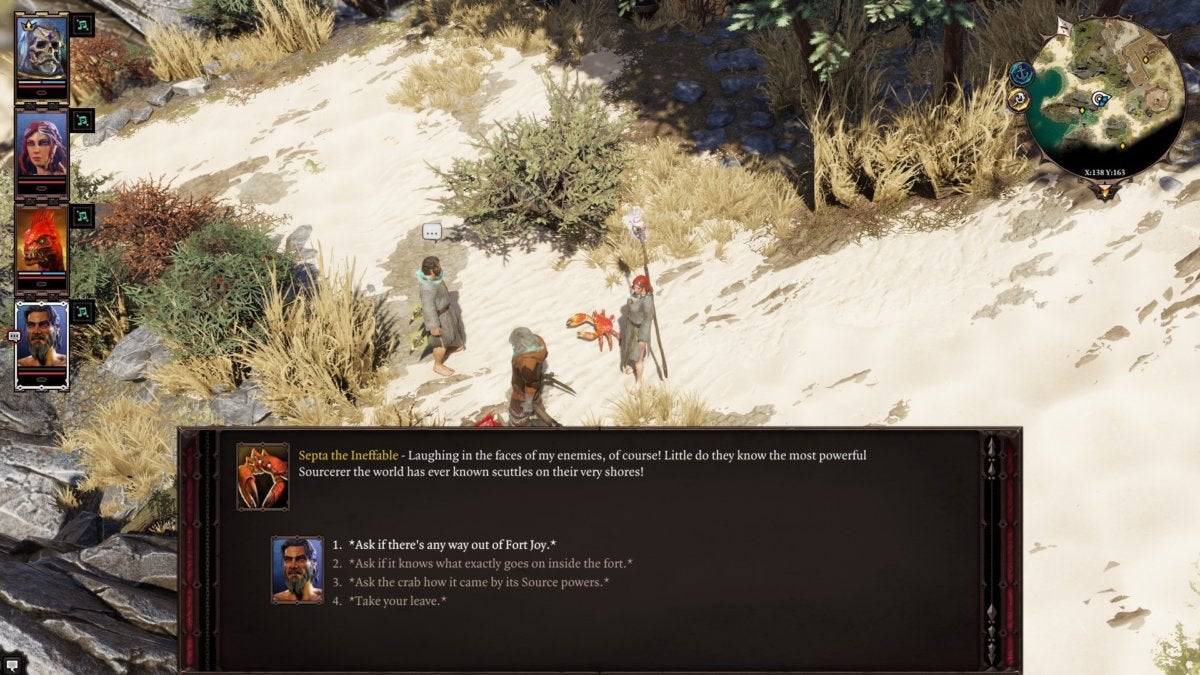 IDG / Hayden Dingman
IDG / Hayden Dingman Fane has it best in some ways, though. As you can imagine, the undead aren't very welcome in your usual social circles. To solve this problem you can wear a hood or you can do one better and—wait for it— wear someone else's face. Yes, as Fane (or a generic undead character) you can get a Faceripper and use it to steal the faces off corpses, Hannibal Lecter style, then transform into that race at will. Fane also has a less-gruesome mask that allows him to transform into any of the four races, sans-face, but where's the fun in that?
And when you do transform, thanks to the flexibility of the tag system, you gain that race's unique traits. Elves have a racial ability where they can eat corpses and absorb the memories (and sometimes the talents) of whoever the body part came from. Cool! Gross! Transform into an elf and Fane gains this ability too.
It also applies in less obvious ways. Lizards are an arrogant and proud race that consider themselves above the rest of the mortals. Talk to a lizard in your normal form and it might brush you off, sneer at you, or even challenge you to a fight. Transform into a lizard though and suddenly that arrogant jerk is your new best friend.
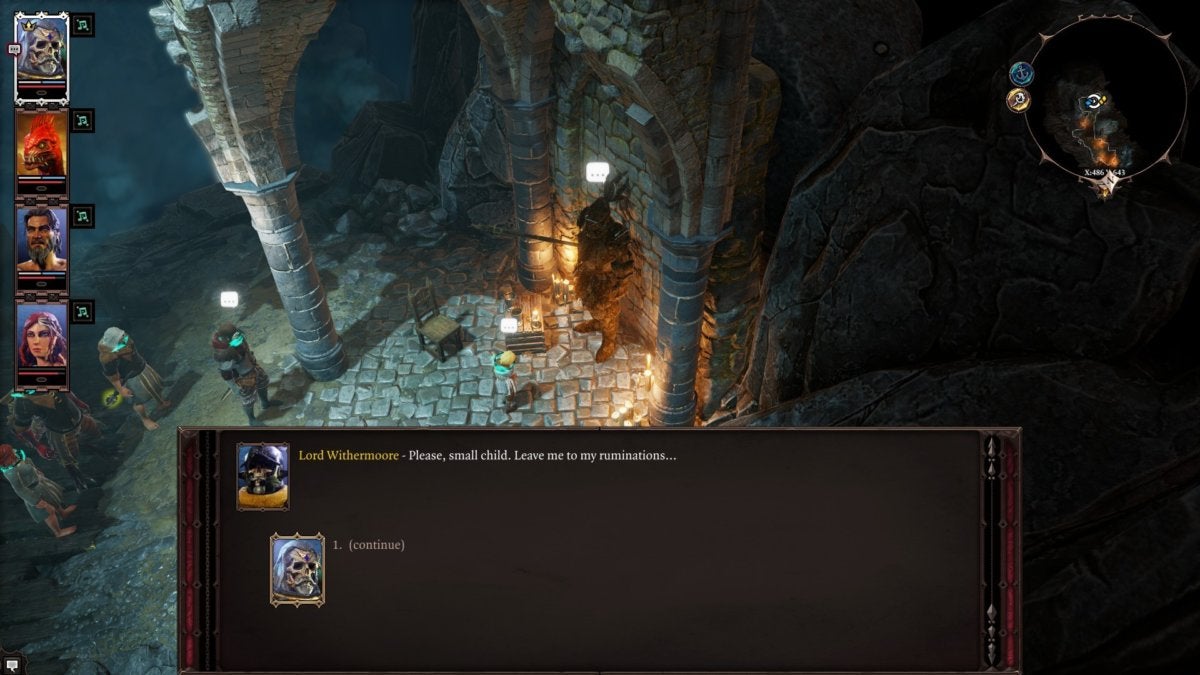 IDG / Hayden Dingman
IDG / Hayden Dingman So yeah, I'm really enjoying Fane so far. The game warns that an Undead path does come with some unique challenges—always wearing a helmet to cover up your creepy skull-face, for one. Also you're actually hurt by standard healing magic and potions, while poison replenishes your health. An interesting wrinkle, that. It's a fair challenge though, and the writing more than makes up for it.
The other unique characters are good, too. Lohse is maybe the most interesting—she lets spirits come and go from her head at will, sort of a ghost hotel. The problem? A malevolent spirit has taken up semi-permanent residence, and keeps taking over her body at inopportune times. She's in my party, for sure, along with the mercenary Ifan and the aforementioned Red Prince.
Also appreciated: Original Sin II lets you choose a class for your companions. Revolutionary! No more "Oh, I can't take this character along because she's a rogue and I don't need another rogue" disappointments. This time, any companion can be any class and support you on your journey.
It's the little things, those quality of life adjustments, that make Original Sin II great. I can't even tell you how many times I've seen a feature, either in this game or its predecessor, and thought "Yeah, whydon't other RPGs do that?" That, to me, is the strongest compliment I could pay.
Bottom line
As I said, I'm barely out of the Early Access area so it's hard to tell how the rest of the adventure will shape up. All Original Sin really needed though (in my opinion) was a stronger story, and so far it seems like Larian's delivered on that and more. Kudos also for an introduction that's slightly less intimidating than the previous game—it's a bit smaller, a bit more focused and directed, and with less opportunity to stumble into something that will really kick your ass, at least early on.
My sole grumble so far: The inventory is still a mess. Better, insofar as you can access all four companion inventories from a single screen, but still a mess.
We'll be back with more concrete impressions of the story, plus any other wrinkles I encounter along the way, once I've finished. I think I'm going to savor this one, though.
Divinity 2 Original Sin New Edition When Respec
Source: https://www.pcworld.com/article/3224908/divinity-original-sin-2-review-impressions.html